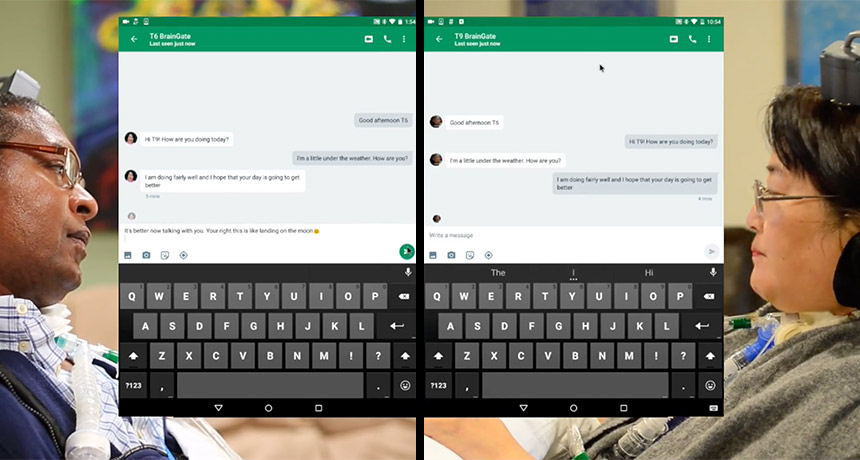Brain implants let paralyzed people use tablets to send texts and stream music

Devices that eavesdrop on neural activity can help paralyzed people command computer tablets to stream music, text friends, check the weather or surf the internet.
Three people with paralysis below the neck were able to navigate off-the-shelf computer tablets using an electrode array system called BrainGate2. The results, published November 21 in PLOS One, are the latest to show that neural signals can be harnessed to directly allow movement (SN: 6/16/12, p. 5).
The two men and one woman had electrode grids implanted over part of the motor cortex, an area of the brain that helps control movement. The brain implants picked up neural activity indicating that the participants were thinking about moving a cursor. Those patterns were then sent to a virtual mouse that was wirelessly paired to the tablet.
Using nothing more than their intentions to move a cursor, the three participants performed seven common digital tasks, including web browsing and sending e-mail. One participant looked up orchid care, ordered groceries online and played a digital piano. “The tablet became second nature to me, very intuitive,” she told the researchers when asked about her experience, according to the study.
Another participant enjoyed texting friends, “especially because I could interject some humor,” he told the scientists. The system even allowed two of the participants to chat with each other in real time.
For the study, the researchers used tablets with standard settings, without installing any shortcuts or features to make typing or navigation easier.